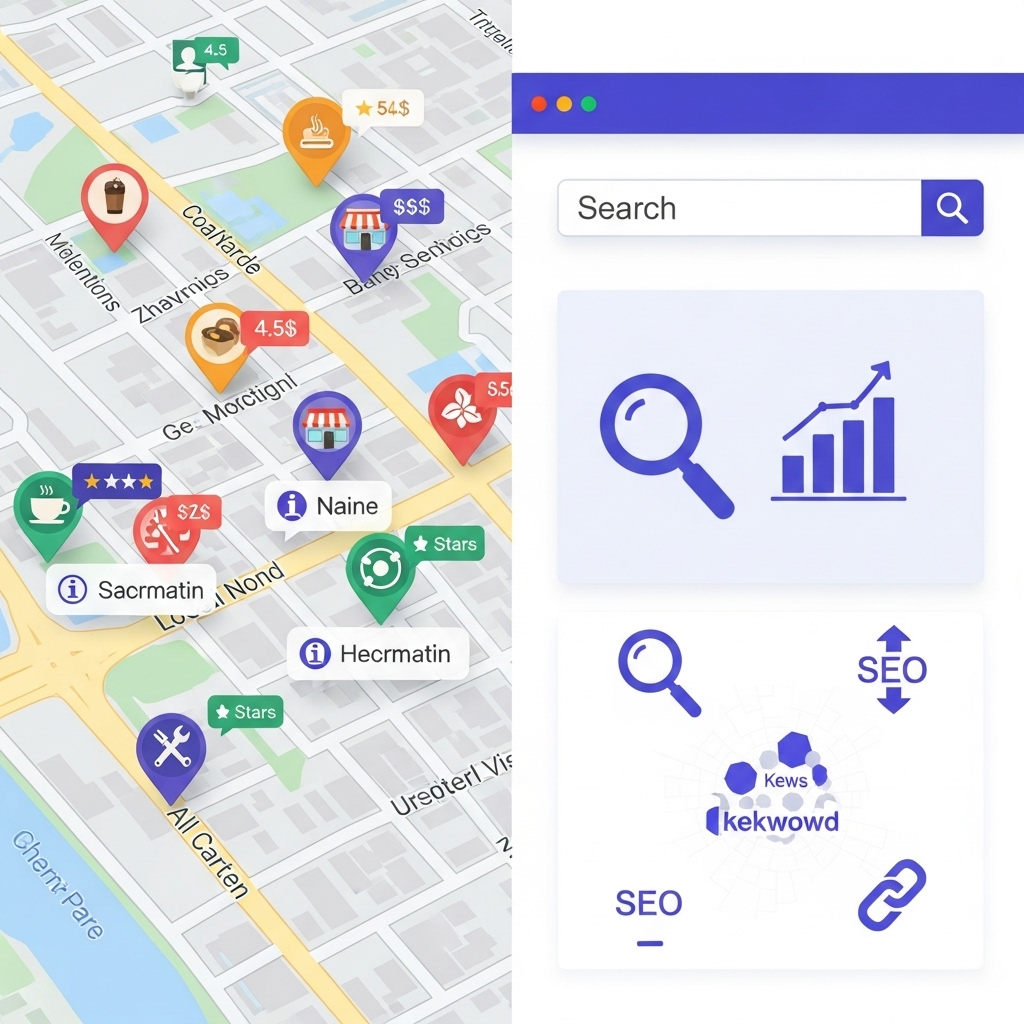
What’s the Difference Between Local SEO and Regular SEO?
In the digital marketing world, SEO (Search Engine Optimization) is crucial for businesses wanting to improve their online presence. However, not all SEO strategies are created equal. Local SEO and regular SEO serve different purposes and target different audiences. In this article, we’ll explore the key differences between the two, along with examples to illustrate each concept.
What is Regular SEO?
Regular SEO, often referred to as national or general SEO, focuses on optimizing a website to rank for keywords relevant to a specific industry or niche on a broad scale. The goal is to increase visibility on search engines for users across a wide geographic area.
Key Features of Regular SEO:
- Broad Audience: Targets a national or global audience rather than a specific locality.
- Keyword Focus: Uses a wide range of keywords relevant to the business, often more competitive.
- Content Marketing: Involves creating high-quality, engaging content that addresses the needs of users.
- Link Building: Focuses on acquiring backlinks from high-authority sites to improve domain authority.
Example of Regular SEO:
Imagine a national e-commerce website selling shoes. They want to rank for keywords like “buy shoes online” or “best running shoes.” Their SEO strategy involves optimizing product pages, writing blog posts about shoe trends, and acquiring backlinks from fashion websites.
What is Local SEO?
Local SEO, on the other hand, is a specialized branch of SEO aimed at optimizing a business’s online presence to attract more customers from relevant local searches. It is particularly important for businesses that have a physical location or serve a specific geographic area.
Key Features of Local SEO:
- Local Audience: Focuses on users searching for services or products within a specific geographic area.
- Google My Business: Utilizes Google My Business (GMB) listings to improve visibility in local search results.
- Local Keywords: Targets location-based keywords (e.g., “best pizza in New York”).
- Customer Reviews: Encourages and manages customer reviews, which play a crucial role in local rankings.
Example of Local SEO:
Consider a local pizza shop in New York City. They want to rank for keywords like “best pizza near me” or “pizza delivery in NYC.” Their strategy includes optimizing their GMB listing, encouraging customers to leave positive reviews, and using location-specific keywords on their website.
Key Differences Between Local SEO and Regular SEO
| Feature | Local SEO | Regular SEO |
|---|---|---|
| Target Audience | Local customers looking for services/products nearby | National/global audience interested in a niche |
| Optimization Tools | Google My Business, local citations | General keyword optimization, link building |
| Keywords | Location-based keywords | Broad, competitive keywords |
| Ranking Factors | Reviews, proximity, local listings | Content quality, backlinks, domain authority |
| Search Results | Local pack, maps, local business listings | Organic search results |
Which One Do You Need?
The choice between local SEO and regular SEO depends on your business model:
- Choose Local SEO if:
- You have a physical location or serve a specific geographic area.
- Your business relies on local customers, such as restaurants, local services, or retail stores.
- Choose Regular SEO if:
- Your business operates on a national or global scale.
- You sell products or services online without a specific location focus.
Conclusion
Understanding the difference between local SEO and regular SEO is essential for any business aiming to improve its online presence. While both strategies aim to increase visibility and drive traffic, they cater to different audiences and employ different techniques. By aligning your SEO strategy with your business goals, you can effectively reach your target customers and achieve greater success online.
Summary
- Local SEO targets local customers and uses tools like Google My Business.
- Regular SEO focuses on a broader audience and emphasizes general keyword optimization.
By determining your business needs, you can choose the right SEO approach to maximize your online visibility and customer reach.
